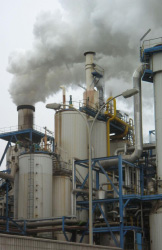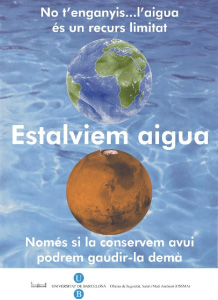Why is it important to preserve the environment?

Our planet provides us with most of the resources we need to survive, such as food, water, energy, oxygen and certain medicines. For this reason, human beings are totally dependent on animal and plant species, as well as on the micro-organisms present on Earth.
It is estimated that there are between 5 and 30 million species on our planet. However, we must be aware of the importance of each one of them, as the loss of a single species can endanger the entire ecosystem.

A large part of the activities that each of us carries out on a daily basis have a certain environmental impact, such as water and energy consumption. Water is a scarce and limited commodity, so that non-rational use can lead to overexploitation of aquifers, droughts, water pollution, failure to meet the minimum necessary levels in rivers, among others. Furthermore, we must also bear in mind that a great deal of energy is consumed in the processes of purification and purification of the water we use.
On the other hand, the environmental impacts derived from energy generation vary depending on the source, being more negative if they come from non-renewable energy sources. Some of the main effects are the pollution and alteration of the environment, mainly due to the emission of greenhouse gases such as CO₂, or the acoustic and visual impact generated by energy-producing installations.
Conserving natural resources, maintaining good environmental conditions and protecting biodiversity should be priorities in our daily activities, both to ensure that we have these resources in the future and to prevent our quality of life and health from deteriorating.
What can I do?

In order to achieve the preservation of our planet, it is very important that our daily actions have as little environmental impact as possible.
Although the gestures and small actions for environmental improvement that each of us can carry out individually may seem insignificant, the sum can produce a great environmental benefit, even greater than that of large governmental projects or initiatives.
This manual aims to present a series of good environmental practices in order to reduce our impact on the surrounding ecosystem as much as possible.
Examples of good practice in responsible energy and water consumption
We offer you some examples of good practices in responsible energy and water consumption that can be applied to the different activities and situations that take place at the UB, as well as to other actions carried out by the university population outside the university. The aim of the advice is to inform and raise awareness among the university community about how to reduce the energy and water consumption associated with our university activity.
Each one of the tables focuses on a specific theme, includes a short description of the good practice, the criteria and advice to follow to put it into practice, and an icon to evaluate the positive impact that these good practices have on the environment:




Imatges:
1. Author: Matthew Bowden www.digitallyrefreshing.com (http://www.sxc.hu/photo/174332) [atribució], Wikimedia Commons (http://commons.wikimedia.org/wiki/File:African_waterfall.jpg)
2. Chimneys of a sugar factory in Peñafiel (Valladolid). Author: Luana Fischer Ferreira. Font: Image and Sound Bank of the Ministry of Education (http://recursostic.educacion.es/bancoimagenes/web/) under Creative Commons (CC BY-NC-SA 3.0) license.
3. Rodin’s Thinker. Author: Adrian Arellano [Domini públic], Wikimedia (http://commons.wikimedia.org/wiki/File:Pensador.jpg).
4. Water saving campaign at the University of Barcelona, 2005.